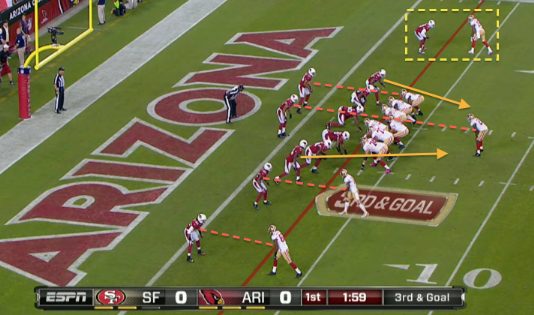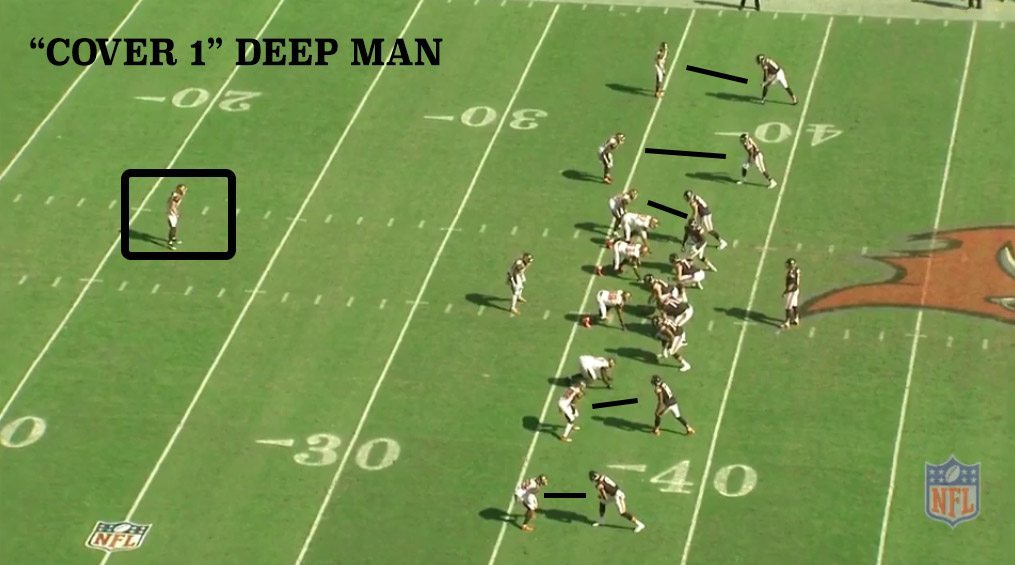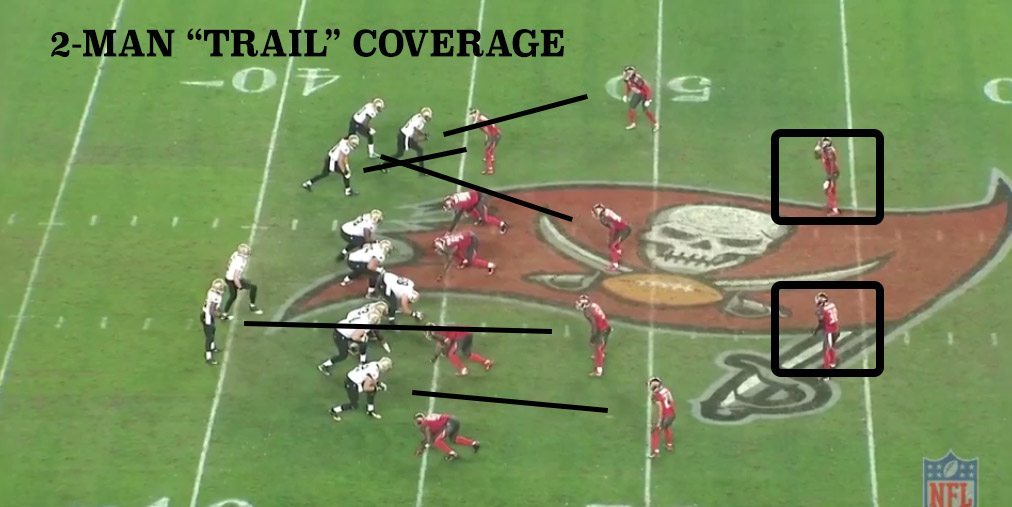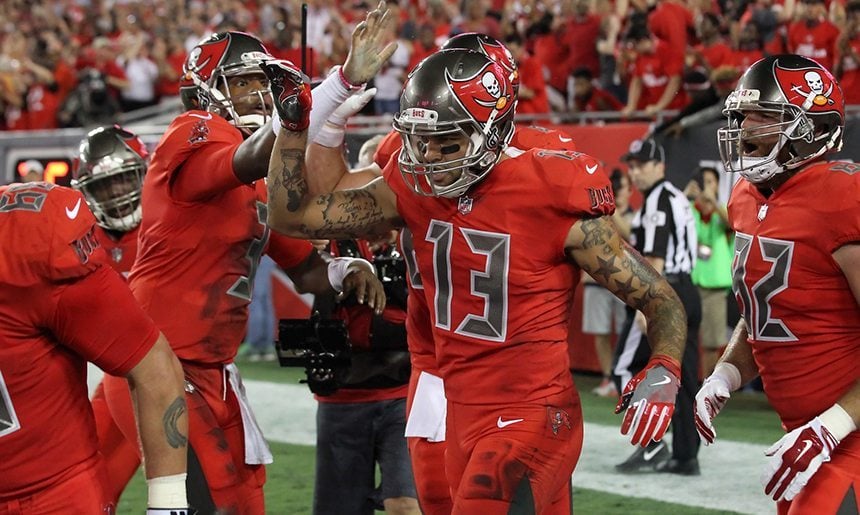Table of Contents
[adrotate group=”1″]
Sikkema’s *Scheme of the Week Part II
Man Coverage
As stated on the previous page, man coverage is where football began. Man coverage is competition at its finest. Man coverage is going up against your opponent, one on one, “mano y mano” and seeing who comes out on top.
Man coverage is the toughest assignment to pull off for any defensive back, but it can also reap the greatest rewards – not only in production on the field, but in recognition and fame. Think about the best cornerbacks over the last decade. What names pop in your head? Darrelle Revis, Richard Sherman, Patrick Peterson. They all play lockdown roles; they all have a nickname with the word “island” in it.
But, the game of football isn’t as easy as that. Offenses in the NFL are simply too good; the coaches are too smart; the players are too fast. For that, even the best at man coverage need help. Maybe not in the way of taking their assignments, but there has to be a coverage plan around them to help them succeed.
There are three different types of man coverage shells that are deployed in modern football. Let’s go over them.
Cover 0

via NFPost
You’ve heard of cornerbacks being put on an island, right? Well, in Cover 0, they’re all on island.
When you read things like “Cover 2” or “Cover 3” the numbers in each tell you how many players are dropping back into a zone coverage role. In a Cover 0, as you would now expect, that means no one is dropping back into a deep zone, and instead each player in coverage is just playing their assignment straight up with no help. Because of this, it’s not used much outside of maybe within ten yards from the offense scoring a touchdown. In those scenarios, the back of the end zone is all the deep coverage help a defensive back would need, in theory.
In order to run a Cover 0 effectively, you have to have a few things. First, you have to have an outside cornerback – or two outside cornerbacks if you’re playing a splits coverage concept where they don’t switch sides of the field – that won’t get beat on a fade route. If your cornerback is too short and can’t consistently compete in the air with No. 1 receivers in the NFL, Cover 0 won’t work.
You also have to have good coverage safeties. Safeties, though they may be lined up further back, still have to have cornerback-like coverage qualities, at least for a short period of time. Most of the time the safeties will be matched up against either a slot receiver or a tight end, and in those cases they either have to be quick enough to not get beat by a shifty slot receiver, or big enough to not get out muscled by a tight end.
At the end of the day, the point of a Cover 0 play is to get as many players blitzing in the pocket as possible as to either get a tackle for loss on a run play, or a quick sack on a pass play. Time is the enemy of a Cover 0. If the pass rush is not good enough, someone in the Cover 0 will eventually lose track of their receiver and will give up a play. Due to the nature of where they are on the field when Cover 0 is called, giving up a play usually means giving up a touchdown.
Right now the Buccaneers rarely run any Cover 0, even on the goal line. They don’t really have the safeties or the corners to keep themselves protected, and their linebackers are more coverage players than pass rush players. Cover 0 does not suit their style at all, even in that situation.
Cover 1

Bucs versus Bears Week 10, 2016
I’m going to try to use as many Buccaneers examples of these coverage shells as I can because that will hopefully give you all a better visual of what I’m talking about since you know the players on the field.
As stated above, the Bucs don’t run much Cover 0, even on the goal line. But, Cover 1 is something they are OK calling in certain situations. In the play above, Chris Conte is lined up as the lone deep cover player (hence Cover 1). As the lines point out, the rest of the defense is in man coverage at the line of scrimmage.
Here’s how that play turned out.
#Bucs don't play a lot of Cover 1, but they did here against the #Bears and it worked well. Even beyond the bad throw, no one open. pic.twitter.com/OrFYXcHUYO
— Trevor Sikkema (@TampaBayTre) June 27, 2017
Though the Buccaneers are much more of a zone team (we’ll get to why on the next page), they do occasionally play in man-to-man Cover 1 to keep the offense honest. It’s risky strategy because it relies heavily on defenders holding their one-on-one match ups with athleticism more than anticipation, but it did pay off there. Even beyond the interception from the bad throw, there was no one open. That’s when Cover 1 can succeed, when a defense forces a quick throw that isn’t there due to press coverage.
2-Man “Trail” Coverage

Bucs versus Saints Week 14, 2016
The final type of man coverage we need to touch on is the 2-Man coverage. This kind of coverage allows for two safeties to play the deep zone like a Cover 2 (as we’ll explain on the next page), but the thought processes behind things is a little different.
Unlike the pure Cover 2, 2-Man has the two deep safeties start out deep down the field, but allow them to make their first step going forward, not back. This is where the “trail” player comes into play. It allows for the rest of the players in coverage to play man, not zone, including the outside cornerbacks. The situation above was the perfect example of when, where and why you would call 2-Man.
In the play above, the Buccaneers are up five with not much time left in the game and the Saints in 4th-and-1 on their own 44 yard line. By calling a 2-Man coverage shell, this allowed for the safeties to appear as if they were both playing deep in a preventative role, but actually it allowed them to stay in their spot and almost both play a “robber” like role to possibly jump a short pass – which was likely since the team only needed one yard to keep the drive going, but they *needed* that one yard.
The play went as follows.
My favorite Keith Tandy play from 2016 pic.twitter.com/kwUGmSHxWn
— Trevor Sikkema (@TampaBayTre) June 27, 2017
Perfect.
Keith Tandy and Bradley McDougald stayed in their spots, read the quarterback’s eyes, and one of them was in position to break on the play as the trail man. 2-Man is the kind of coverage you call when you think the offense is going to make a short pass to convert a first down. It’s not something the Buccaneers ran too much of last year because it does leave you open to getting beat deep. But the situation above was the perfect time to call it, and its designed paid off. When we talk about the Buccaneers staying fluid with their safeties, the option to use one or the other interchangeably as the strong a free safeties each play, this is the kind of stuff they can do with that in mind.
Now let’s move on to zone coverages.


